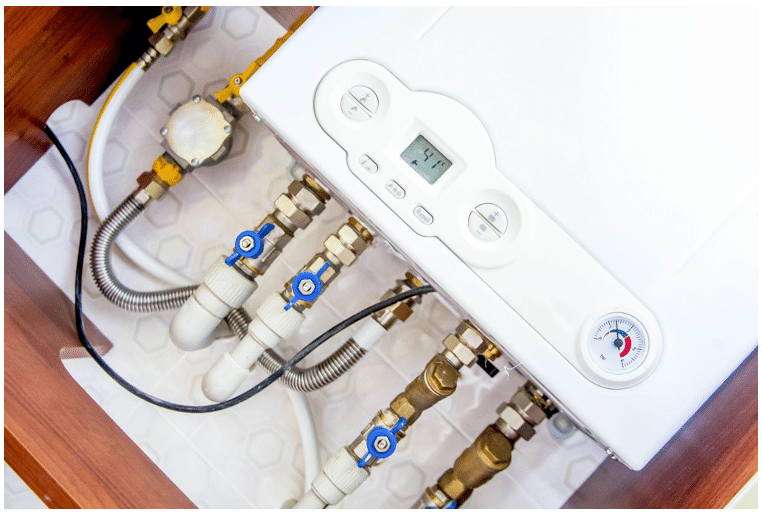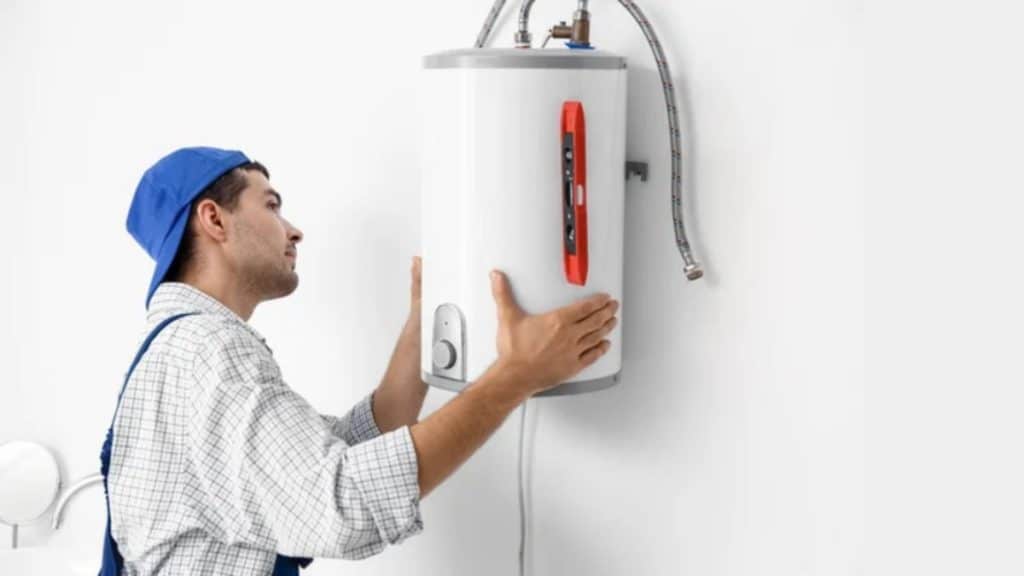Hot water systems are integral to Australian households, providing comfort and convenience across the country. Whether it’s for a relaxing bath, cooking, cleaning, or heating, having a reliable source of hot water is essential. As such, understanding the installation costs associated with different hot water systems is crucial for homeowners looking to upgrade or install a new system.
A variety of hot water systems are available in Australia, each with its own set of characteristics and costs. By examining these options closely, homeowners can make well-informed decisions that align with their needs and budgets. This article aims to guide readers through the labyrinth of installation costs for electric, gas, solar, and heat pump systems, offering insights that will help ensure a smooth installation process and efficient system performance.
Types of Hot Water Systems in Australia
Australia’s diverse climate and energy options have given rise to several types of hot water systems. The four main types—electric, gas, solar, and heat pump—each come with their own set of advantages and disadvantages, suited to various household needs and geographical regions.
Electric Hot Water Systems
Electric hot water systems are among the most common in Australia. They are popular due to their simplicity and relatively low upfront cost. These systems heat water using electricity and are typically easy to install. However, they tend to have higher running costs compared to other systems, especially in areas where electricity prices are steep. Electric systems can be either tank-based or instantaneous, with the latter usually being more energy-efficient.
Pros:
– Lower initial cost
– Simple installation
– Suitable for nearly all homes
Cons:
– Higher running costs
– Can be less environmentally friendly
Typical Usage: Best suited for homes where electricity is the primary energy source or in areas without access to gas.
Gas Hot Water Systems
Gas hot water systems, powered by natural gas or LPG, are generally more cost-effective to run compared to electric systems. They heat water quickly and can be very efficient, particularly instantaneous or continuous flow models. However, installation can be more complex, particularly if a gas line isn’t already in place.
Pros:
– Lower operational costs
– Fast water heating
– More efficient than electric systems
Cons:
– Higher initial installation cost
– Requires a gas connection
Typical Usage: Ideal for homes with existing gas connections and those looking for efficient and fast water heating.
Solar Hot Water Systems
Solar hot water systems are environmentally friendly and can significantly reduce energy bills. Utilising solar panels, these systems harness the sun’s energy to heat water, often supplemented by an electric or gas booster for cloudy days. While they have a higher initial cost, government rebates can help offset these expenses.
Pros:
– Environmentally friendly
– Low running costs
– Potential government rebates
Cons:
– High upfront cost
– Dependence on sunlight
Typical Usage: Perfect for environmentally conscious households in sunny regions, looking to minimise long-term costs.
Heat Pump Hot Water Systems
Heat pump systems use electricity to move heat from the air or ground to heat water, making them very efficient. They typically have lower operational costs, similar to solar systems, and can operate in a range of climates. These systems might require more space and can be noisy, but they provide a good balance between upfront costs and operational efficiency.
Pros:
– High efficiency
– Lower running costs
– Suitable for varying climates
Cons:
– Moderate upfront cost
– Space requirements and potential noise issues
Typical Usage: Suitable for homes across diverse climates, especially those without direct solar access but seeking energy efficiency.

Factors Influencing Installation Costs
When it comes to installing a hot water system, several factors dictate the overall cost. These can vary widely, depending on system type, location, and specific household requirements.
1. System Type and Complexity
The type of hot water system chosen plays a significant role in installation costs. For example, solar and heat pump systems tend to have higher initial costs due to their complexity and the technology involved. In contrast, electric systems are generally more straightforward to install, thus carrying a lower installation cost.
2. Labour Costs
Labour costs can vary greatly across different regions in Australia. Urban areas typically have higher labour rates than rural or regional ones. The complexity of installation, such as the need for additional plumbing or electrical work, will also affect labour charges.
3. Site-Specific Conditions
The specific conditions of the site can influence expenses significantly. This includes factors like the location of the property, current infrastructure, and any specific modifications needed, such as installing a gas line or reinforcing the roof for solar panels.
4. Permits and Regulations
In some cases, installing a hot water system requires permits or adherence to specific local regulations, which can increase costs. This is particularly pertinent when installing systems like solar panels that may need council approval.
Electric Hot Water Systems: Cost Breakdown
Electric hot water systems, being the most straightforward in terms of installation, offer an insightful look into cost structures and efficiency ratings.
Installation Costs
The cost of hot water system installation in Australia can range from $800 to $2,000. This cost includes the price of the unit as well as installation. The wide range reflects the type of electric system—tank vs. instantaneous—and any additional requirements, such as electrical work.
Energy Efficiency and Long-term Savings
Efficiency ratings can impact both upfront costs and long-term savings. More efficient models, while typically pricier initially, can lead to substantial savings on electric bills over time.
Installation Process
The installation process for an electric system is generally quick and straightforward. It typically involves connecting the system to the existing plumbing and electrical infrastructure. Any additional electrical work required, such as upgrading a circuit, will add to the overall cost.
Additional Costs
Additional costs may include permits or upgrades necessary to meet current electrical standards. Furthermore, switching from a gas system to an electric one can also incur costs related to decommissioning the existing setup.
Gas Hot Water Systems: Understanding Expenses
Gas systems, while efficient in operation, come with their own set of installation challenges and associated costs.
Cost Analysis
Installing a gas hot water system can cost between $1,000 and $3,000. This includes the unit price, installation, and any necessary additional work, such as extending gas lines. Continuous flow systems might have additional costs due to the need for venting.
Impact of Gas Supply
The presence or absence of an existing gas supply can significantly affect installation costs. For homes already connected to the gas main, installation is straightforward. However, adding gas lines can increase costs considerably.
Instantaneous vs. Storage Systems
There are cost differences between instantaneous and storage systems. Instantaneous systems, while generally more expensive to install, offer efficiency benefits that can lead to savings over time.
Safety Requirements
Installing a gas system involves adhering to strict safety protocols, such as ensuring proper ventilation and compliance with local regulations. These requirements can add to both the installation process and the overall budget.
Solar Hot Water Systems: Investment Overview
Solar systems, aiming at sustainability and long-term savings, require a detailed cost overview.
Initial Installation Costs
Initial costs for solar hot water systems can be between $3,000 and $7,000. Factors influencing this include the size of the system, type of panels, and whether solar boosters (gas or electric) are required.
Government Rebates and Incentives
Government rebates and incentives can offset the high upfront costs. The Small-scale Renewable Energy Scheme (SRES), for instance, offers financial assistance that lowers the effective initial investment.
Return on Investment
Solar systems may have higher initial costs, but they often result in lower utility bills and can eventually pay for themselves. The return on investment can vary, typically occurring within 5 to 10 years, depending on energy usage and regional sunlight.
Installation Variables
Roof orientation and pitch, panel type, and system size are key variables in installation costs. Properties with optimal roof orientation and minimal shading will naturally have lower associated costs compared to those requiring additional mounting solutions.
Maintenance Costs
Solar systems, while generally low-maintenance, may require periodic check-ups to ensure panels operate efficiently. This maintenance, although relatively inexpensive, should be factored into the overall cost equation.
Heat Pump Hot Water Systems: Cost Evaluation
Heat pump systems, known for their efficiency, offer a unique cost structure worth considering.
Introduction to Technology
Heat pump technology makes these systems highly efficient, as they essentially transfer heat from the air. This efficiency translates into lower running costs compared to traditional systems.
Installation Costs
Installation costs for heat pump systems generally range from $2,500 to $4,500. These costs are determined by the type and size of the pump, as well as any home modifications required, such as increasing space for the unit.
Operational Efficiency
Heat pumps are particularly efficient in moderate climates but vary in colder regions. Understanding a locale’s climate is key to evaluating the total cost-effectiveness of a heat pump system.
Additional Costs: Noise and Space
With heat pump systems, homeowners might encounter additional costs related to noise insulation or space requirements. Ensuring adequate space and minimising noise can involve auxiliary expenses, which should be considered during initial planning.
Comparison with Traditional Systems
Compared to conventional systems, heat pumps offer considerable long-term savings and environmental benefits. Though they involve higher upfront costs than electric systems, these are often balanced by lower energy bills and potential governmental support for eco-friendly installations.
Conclusion
In conclusion, installing a hot water system in Australia involves careful consideration of various factors, including system type, location, and specific household requirements. Whether electric, gas, solar, or heat pump, each system type offers its own balance of initial costs and long-term benefits. Consumers are encouraged to consult with industry professionals to obtain accurate estimates tailored to their specific situations.
Not only do installation costs play a pivotal role in decision-making, but sustainability and efficiency should also be considered. Investing in a more efficient system might seem costly upfront, but often results in significant savings down the road. By weighing both immediate and future expenses, homeowners can make decisions that not only offer comfort and convenience but also align with their financial and environmental goals.
